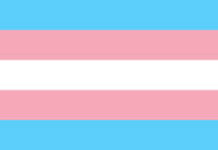A survey by the Center for Creative Leadership found that 60 percent of smartphone-using professionals kept in touch with work for a full 13.5 hours per day, and then spent another 5 hours juggling work email each weekend. As Mother Jones reports, “That’s 72 hours a week of job-related contact.  Another survey of 1,000 workers by Good Technology, a mobile-software firm, found that 68 percent checked work email before 8 a.m., 50 percent checked it while in bed, and 38 percent “routinely” did so at the dinner table. Fully 44 percent of working adults surveyed by the American Psychological Association reported that they check work email daily while on vacation—about 1 in 10 checked it hourly. It only gets worse as you move up the ladder. According to the Pew Research Center, people who make more than $75,000 per year are more likely to fret that their phone makes it impossible for them to stop thinking about work.
Another survey of 1,000 workers by Good Technology, a mobile-software firm, found that 68 percent checked work email before 8 a.m., 50 percent checked it while in bed, and 38 percent “routinely” did so at the dinner table. Fully 44 percent of working adults surveyed by the American Psychological Association reported that they check work email daily while on vacation—about 1 in 10 checked it hourly. It only gets worse as you move up the ladder. According to the Pew Research Center, people who make more than $75,000 per year are more likely to fret that their phone makes it impossible for them to stop thinking about work.
“Over time, the creep of off-hours messages from our bosses and colleagues has led us to tolerate these intrusions as an inevitable part of the job, which is why it’s so startling when an employer is actually straightforward with his lunatic demands, as with the notorious email a Quinn Emanuel law partner sent to his underlings back in 2009: “Unless you have very good reason not to (for example when you are asleep, in court or in a tunnel), you should be checking your emails every hour.”
“Constant access may work out great for employers, since it continues to ratchet up the pressure for turning off-the-clock, away-from-the-desk hours into just another part of the workday. But any corresponding economic gains likely aren’t being passed on to workers: During the great internet-age boom in productivity, which is up 23 percent since 2000, the inflation-adjusted wages and benefits for college graduates climbed just 4 percent, according to the Economic Policy Institute. Continue reading “Phone as leash”












 reserved exclusively for dads, causing some to credit the country with forging the way for a new kind of nurturing masculinity. In 2010, the World Economic Forum designated Sweden as the most gender-equal country in the world.
reserved exclusively for dads, causing some to credit the country with forging the way for a new kind of nurturing masculinity. In 2010, the World Economic Forum designated Sweden as the most gender-equal country in the world.
